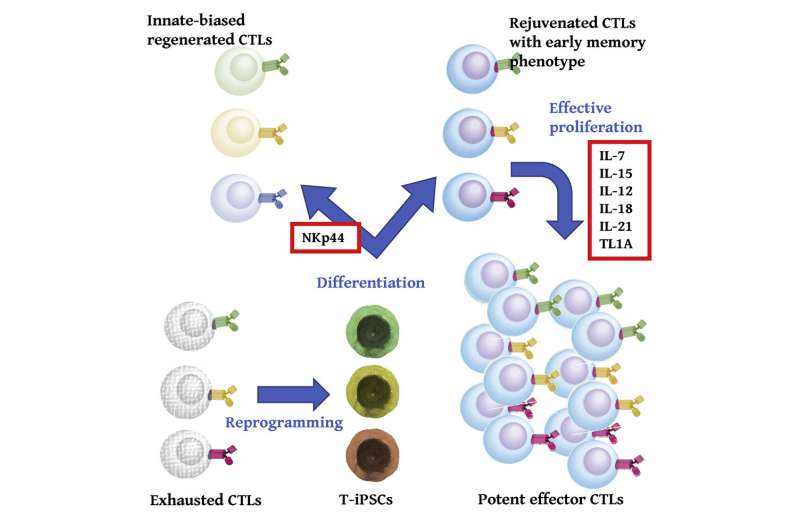Building stronger anti-cancer therapies with stem cells

Cancer therapies have seen great development over the decades. Radiotherapies and chemotherapies have saved countless lives, but the latest arsenal, adoptive cell therapies (ACT), has stirred most excitement. In ACT, cells are processed to enhance their anti-cancer immune effects and injected into the patient. A new study by CiRA Professor Shin Kaneko and colleagues shows how iPS cell technology can produce some of the most potent anti-cancer immune cells for ACT yet.
T cells are the primary cells used in ACT, as they are the immune cells in the body most capable of killing cancer. However, current strategies using T cells have several, limiting the number of patients who can benefit from ACT. The Kaneko lab is exploring iPS cell technology as a solution.
“We have to process the T cells before injecting them into the patient. This processing affects the quality. If we first process the cells as iPS cells and then differentiate them into T cells, we can avoid many of these problems,” he said.
As promising as this strategy is, generating T cells from iPS cells is not trivial. Kaneko’s research team has reported many studies in which iPS cells were differentiated into T cell-like cells, that is, the T cells showed behavior that suggests they are chimeras of T cells and other immune cells.
“The innate immune properties may cause the cells to kill non-cancer cells in the patient or graft versus host disease,” explained Kaneko.
In order to produce bona fide T cells, iPS cells must be cultured in an assortment of cytokines, which are factors naturally secreted by immune cells.
“IL-2 and IL-15 are commonly used to generate T cells, but we found they promoted innate immunity characteristics,” explained Dr. Yohei Kawai, the first author of the study. “To get adaptive immunity characteristics, we replaced IL-2 and IL-15 with IL-21.”
IL-21 is a pleiotropic cytokine whose affects are not well understood but is secreted by helper T cells.
“I was constantly searching cytokines to suppress the innate phenotype,” added Kawai.
The immune system is broken down into innate and adaptive immunity. As the names suggest, cells in the first group attack anything deemed foreign to the body, while those in the second are sensitized to specific pathogens, including cancers, and include all T cells.
T cells are further divided into subsets, or phenotypes, including memory and effector types. Effector T cells are more vigilant and can be viewed as frontline protection. Memory T cells, on the other hand, are recruits in training. If needed, they can be promoted to effector T cells and move to the frontline, but memory T cells themselves are kept off the battlefield.
Besides potency, another major difference between phenotypes is proliferation capacity. Memory T cells are able to multiply at much higher rates than effector T cells. Thus, somewhat counterintuitively, a therapy using memory T cells is preferred, because they can quickly mature into the effector phenotype if necessary, but they can also expand into more memory T cells while in waiting, increasing the number of cells ready for attack.
Indeed, the memory T cells prepared from iPS cells showed superior anti-cancer effects in ACT than primary T cells and more proliferation capacity.
Source: Read Full Article


